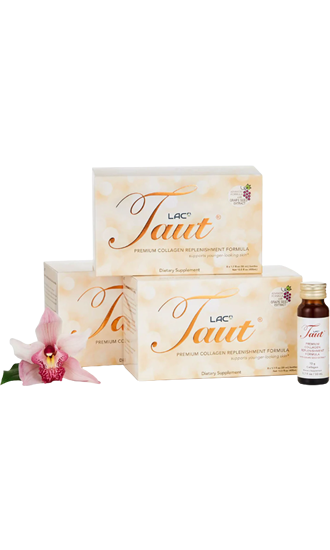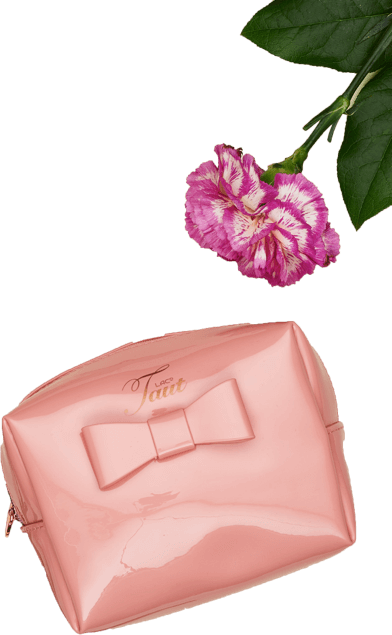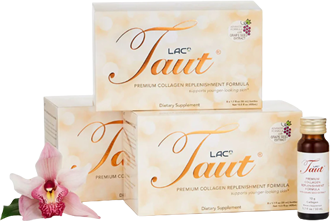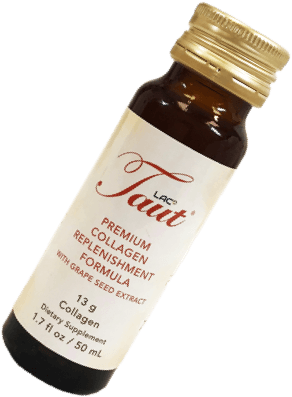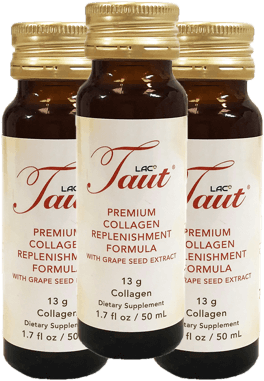Sun Damaged Skin: The Best Treatment for Damage On Your Face

We all love spending time outdoors and enjoying the sunshine, but there's nothing worse than getting home and realizing your skin is as red as a lobster!
It's not only surface sunburn that we have to worry about either, we also have to consider the long-term damage that UV radiation can have on our skin's structure. None of us want to end up with sagging, wrinkles, and a leathery skin texture; not to mention the more serious damage that we can face on our immune system and overall health.
So what can be done to keep our skin taut and healthy?
The first step you can take to protect your skin is to understand why and how the sun damages your skin, and what tools and treatments you can use to stop it. In this article, we will show you how to protect your skin all year round; offering some tips and tricks to reverse sun damage and reduce the appearance of age spots, wrinkles, and sagging skin.
Browse our skincare collection:
https://www.renewskinco.com/collections/all
What UV Rays Do to Our Skin
Protecting your skin from the sun is important, no matter what time of year it is, but it’s especially vital in the summertime. While you might want to bare your skin in the summer to achieve a beautiful, sun-kissed complexion, UVA and UVB radiation from the sun can wreak havoc on your skin (no matter your skin type) and cause premature aging if you aren’t careful.
UVA rays, which account for 90 to 95 percent of the UV radiation that reaches the earth, penetrate deep layers of the skin and cause tanning. UVA radiation causes a higher rate of collagen breakdown in the dermis than chronological aging.
UVB radiation accounts for only 5 to 10 percent of solar radiation, but it damages the epidermis, or surface layer of the skin, causing sunburn and potentially leading to skin cancer.
Let's take a closer look at the ways in which UV radiation harms our skin:
More helpful reading: How to apply sunscreen
Sunburn (Redness, Inflammation & Pain)
We have all suffered a form of sunburn at some stage in our lives, whether we forgot to apply sun protection one day or we simply neglected our skin while trying to tan ourselves at the beach.
Sunburn can be extremely uncomfortable, itchy, and even painful, depending on how bad your burn is. It is characterized by red and painful skin that is hot to the touch. Sunburn can also lead to severe dry skin that peels away in scaly patches. Which isn't a cute look for anyone!
Sunburn can take several days to recover from, and it will need to be treated with cooling lotions and painkillers like paracetamol or ibuprofen.
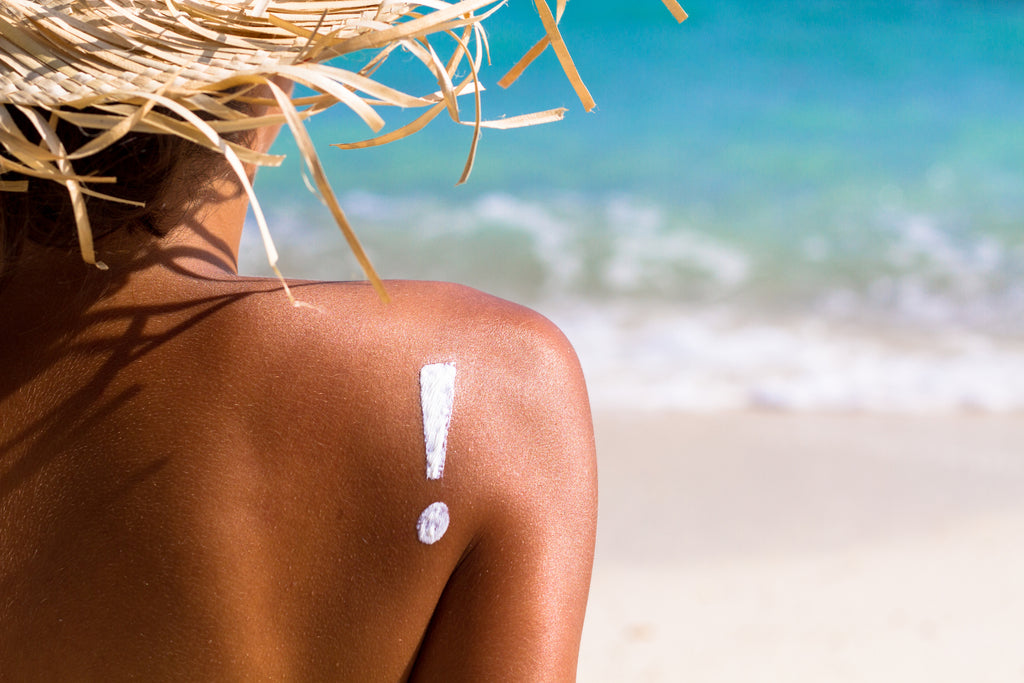
More helpful reading:
https://www.renewskinco.com/blogs/i/skincare-for-redness
Loss of Collagen & Elastin
While sunburn is the most immediately visible form of sun damage on your skin, unfortunately, there are much deeper and more destructive effects on your skin. Exposure to too much sun can cause damage to your body's collagen – the protein responsible for healthy, firm, and youthful skin.
UVA rays cause the collagen in your skin to break down at a higher rate than normal aging. They do this by penetrating the dermis, or middle layer of the skin's structure, and lead to the abnormal buildup of elastin. This elastin accumulates and results in the production of enzymes that break down collagen. We define elastin here.
The more sun exposure you get, the worse the damage becomes. The sun's ultraviolet UV rays also create free radicals, which are unstable oxygen molecules that increase the number of enzymes that break down collagen. An excessive amount of free radicals in your body can also weaken your vascular system.
What makes things worse is that even the light from your phone or computer can damage your elastin and collagen, too. The blue light emitted from your digital devices have similar effects to UVA and UVB rays, so our skin really does need protection on a daily basis, whether we go outdoors or not.
More helpful reading: Blue light skin damage
Premature Aging
Our skin ages over time due to intrinsic and extrinsic aging processes. Intrinsic aging is the natural result of time passing, and our bodies producing less of the proteins and nutrients that the skin needs to stay supple and healthy. What do dead skin cells look like?
Extrinsic aging, on the other hand, is the degradation in our skin quality due to environmental forces like sun exposure, blue light, environmental pollutants, and cigarette smoking. These are often factors we can influence, and you'll want to whip out the sunscreen as soon as you hear that 80% of extrinsic aging comes from UV radiation. 1
This means that sun exposure without adequate protection has a monumental effect on our skin's aging process, and too much sun will inevitably lead to signs of photoaging like age spots, face and neck lines, wrinkles, and sagging skin.
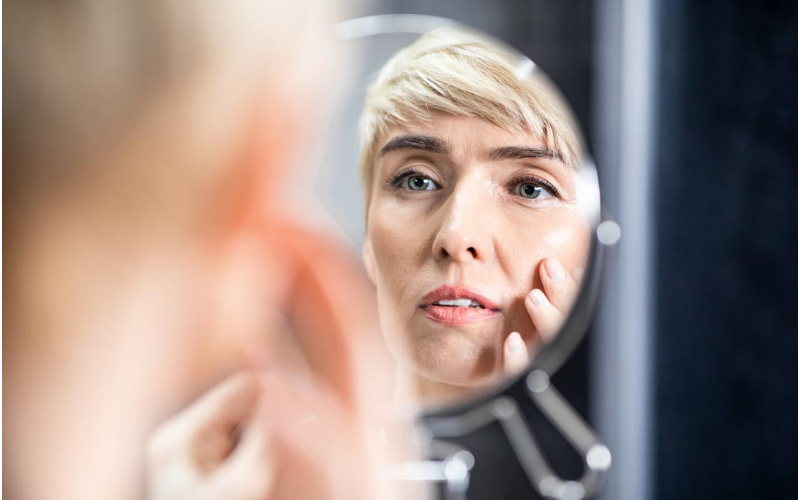
More helpful reading by RenewSkin Inc.: How to get rid of deep forehead wrinkles
Pigmentation
Exposure to the sun's ultraviolet UV rays also leads to hyperpigmentation in your skin. Even if it is a bronzed tanned look that you want, you will need to be careful of this effect of sun exposure.
As we have mentioned, the sun's UVA rays penetrate deep into the dermis, right down to your skin cells. When this UVA light hits your skin, your cells will detect danger and produce melanin in order to stop your skin from burning. Melanin is the brown pigment that makes your skin tanned, and it can also lead to freckles, age spots (solar lentigines), and an uneven skin tone. It can also worsen the appearance of acne scars and blemishes.
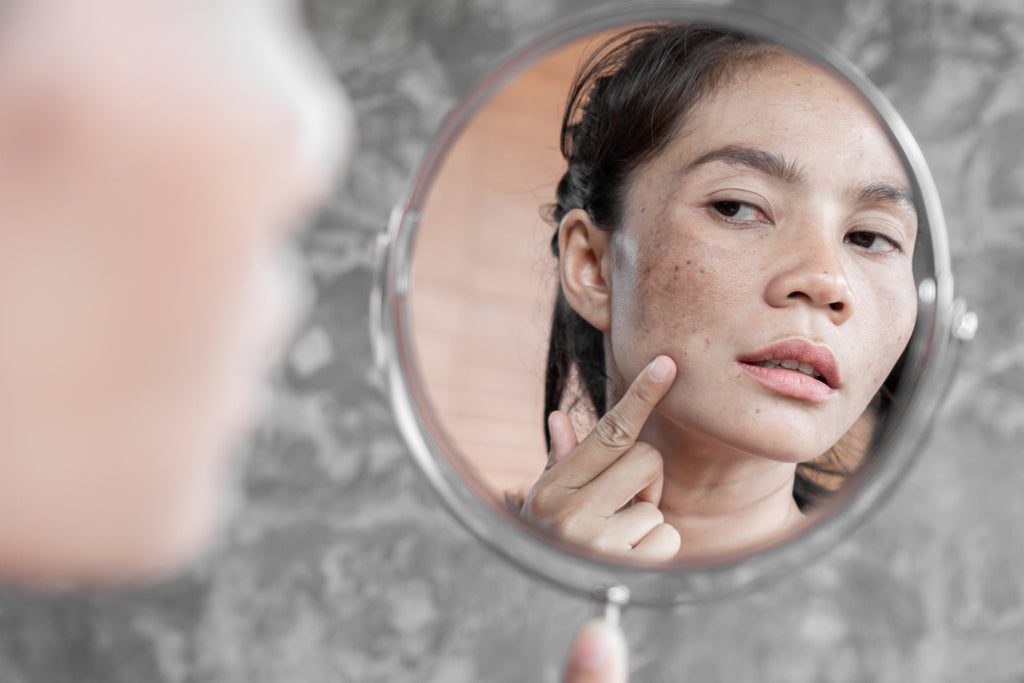
More helpful reading: How to remove age spots
Skin Cancer
The most serious and long-term health effect of UV radiation is the risk of skin cancer, which can be deadly. There are three main types of skin cancer to be aware of: basal cell carcinoma, squamous cell carcinoma, and melanoma.
More helpful reading: best ingredient for anti aging
Basal Cell Carcinoma
Basal cell carcinoma is the most common type of skin cancer, caused primarily by UVB rays. The first signs of this disease include a transparent lump on the skin, sores, scars, or shiny bumps, which you should always report to a doctor or dermatologist right away.
More helpful reading: Skin care trends
Squamous Cell Carcinoma
Squamous cell carcinoma is the second most common type of skin cancer, which is also caused by UVB rays. This type of skin cancer affects the cells that live at the outer layer of our skin which are called squamous cells. Symptoms can appear as scaly red patches, warts, sores, or thickened areas of skin, which should be reported to a doctor or dermatologist for medical review.
More helpful reading: Marionette lines treatment
Melanoma
Melanoma is a skin cancer that originates from the damage caused at the cellular level by UVA rays. The first signs of melanoma are usually patches of brown pigment that look like moles, but these can be more asymmetrical or irregularly shaped brown patches of skin. Melanoma is the most deadly form of skin cancer, so you should always look out for signs of changes in your moles over time, and visit a dermatologist or doctor to have your moles mapped each year.
Learn more about what causes wrinkles here
Look Out for Actinic Keratosis or Any Unusual Skin Changes
Something to look out for is the appearance of small rough or scaly patches of skin called actinic keratosis which can be precursors for skin cancer. If you see something on your skin that might be an actinic keratosis, or if you see any unusual signs or symptoms on your skin, you should check them with your doctor right away for medical review.
Skin cancer requires immediate medical treatment from your doctor, and it is a very serious health condition that can be treated if diagnosed early. So don't delay a trip to your dermatologist or doctor if you see any sign of the above symptoms.

More helpful reading:
https://www.renewskinco.com/blogs/i/how-to-repair-sun-damaged-skin-collagen-and-antioxidants
3 Ways To Protect Our Faces & Bodies From Sun Exposure
When it comes to the sun and your skin, protection is key. Prevention is always better than a cure, so the best thing you can do for your skin is to take preventative action. Here are our top 3 tips for keeping your skin safe from harm:
More helpful reading: Collagen for face
1. Wear Broad-Spectrum Sunscreen
It's not just for your summer skin care regimen, your dermatologist says should be wearing broad-spectrum sunscreen every day of the year. Even on a cloudy day or a day that you might be indoors a lot, your skin still needs protection.
When reading your sunscreen label, here are some criteria to look out for:
- Broad-spectrum – This is a rating for sunscreen in the U.S. which means that the sunscreen will defend your skin against both UVA and UVB radiation. If this term is not on the label, it might not block both.
- SPF rating – The SPF (Sun Protection Factor) rating on sunscreen is a sign of long you can be in the sun before radiation damages your skin. SPF 30 means that the product can let you stay in the sun 30 times longer than usual before the sun damages your skin. However, you should bear in mind that this rating was given in a lab, and in reality, external factors like wind, humidity, and sweat will make your sunscreen wear off quicker than usual. That's why it's important to always overestimate the SPF rating you will need.
- Water-resistant – This isn't a sign that the sunscreen is entirely waterproof, but it means that it is resistant to water and won't melt away at the first sign of sweat or rain. You should, however, always reapply sunscreen after swimming.
- Physical vs. chemical – Physical sunscreens are made with zinc and titanium dioxide and they work to physically reflect the sun away from your skin, while chemical sunscreens absorb UV light to shield your skin. Both are effective and many sunscreens now contain a mixture of both types of ingredients. 2
Make sure you apply your sunscreen 15 to 20 minutes before you go outside, and reapply every two hours.
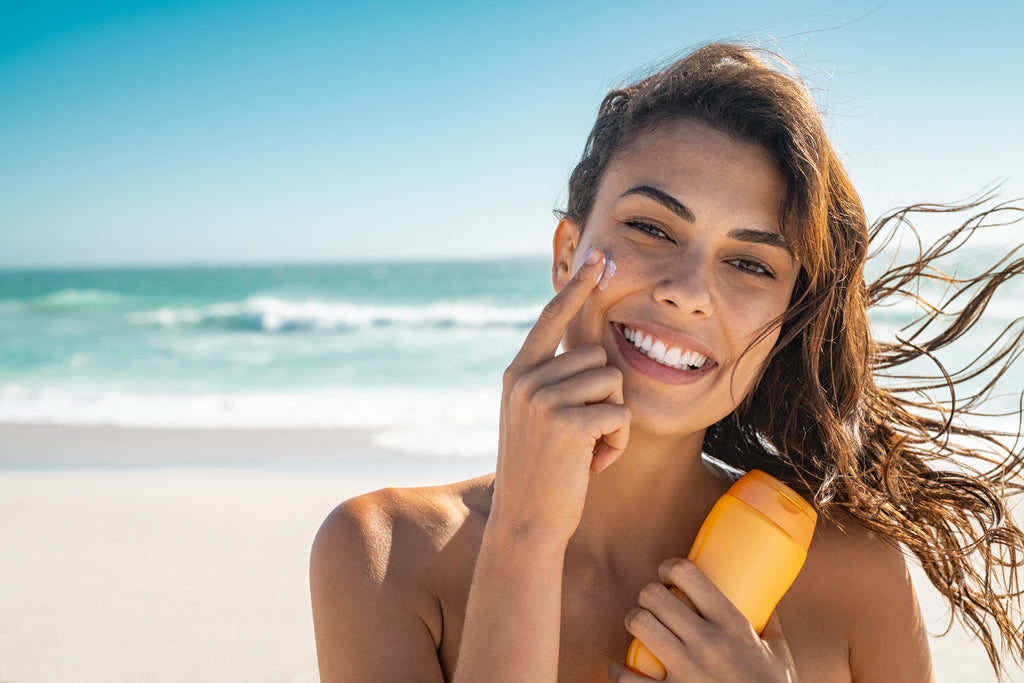
More helpful reading by RenewSkin Inc.: Chapped lips causes
2. Avoid The Sun Between 10 a.m. and 4 p.m.
To reduce the risk of sun damage and skin cancer, the Centers for Disease Control and Prevention (CDC) recommends that both men and women avoid the sun during the hottest part of the day, which is between 10 a.m. and 4 p.m. 3
This is particularly important during the hot summer months when UV radiation is strongest. However, this doesn't mean you need to be indoors all of the time! You can spend time outdoors, but to avoid sun damage simply stay in shaded areas as much as you can.
It is also helpful to wear a wide-brimmed hat, sunglasses, and loose-fitting clothing that covers the skin and keeps you cool.

More helpful reading from RenewSkin Inc.:
3. Protect Your Skin and Body with Powerful Antioxidants
Antioxidants are compounds that neutralize free radicals and defend your body from the pressures of oxidative stress. They complement your sunscreen and help prevent sun-damaged skin, and you can include them in your skincare regimen in three ways:
More helpful reading: Best food for anti aging
Eat Foods Rich in Vitamins & Antioxidants
A diet rich in antioxidants can neutralize free radicals, counteract the damaging effects of the sun, and potentially even reverse those negative effects. These protective vitamins, minerals, and nutrients are available in the foods you eat and can significantly boost your body’s natural UV-filtering abilities and enhance its defenses against free radical formation.
Fruits are rich in antioxidants. Cranberries, blueberries, and blackberries have the highest levels of antioxidants among fruits. For example, eating one cup of wild blueberries will provide you with 13,427 total antioxidants, which is about 10 times the USDA’s recommendation. Other fruits that are high in antioxidants include plums, oranges, grapes, strawberries, and raspberries.
Green tea is also a powerful source of a type of antioxidants known as polyphenols, as well as a catechin called ECGC which is particularly effective at preventing skin cell damage. So pouring yourself a cup of matcha green tea each morning may help defend your skin against harmful radiation, and maybe even prevent some of those pesky fine lines and wrinkles! 4

More Helpful Reading: best way to tighten skin above knees
Use Antioxidant-Rich Skincare Products
Topical skincare treatments that contain antioxidants should be incorporated throughout your skincare routine throughout the year to defend your skin against sun damage and external pollutants.
Antioxidants like vitamin C, vitamin A, botanical squalene, and herbal extracts can be found in cleansers, serums, moisturizers, and masks that nourish and brighten your skin. Antioxidants help reduce inflammation, calm redness, brighten skin, and encourage your skin's natural repair process – which is a boon for reducing the appearance of fine lines and wrinkles. Learn more about retinol cream benefits by RenewSkin Inc. 5
Antioxidant serums are particularly beneficial as treatments for sun-damaged skin because the best serums contain a potent combination of active ingredients that are designed to penetrate deep into your dermis, reaching the cellular level where they can be most effective.
Taut Intensive Recovery Serum contains 7 powerful botanical herbal extracts with proven antioxidant & anti-inflammatory properties designed to repair sun-damaged skin and reinforce your skin barrier.
Like a botanical elixir for your skin, our formula contains German chamomile which restores healthy fats and seals moisture into your skin, repairing the barrier layer and fighting free radicals. Green tea eliminates free radicals , reactivates skin cells, and reduces the appearance of fine lines and wrinkles, while Scutellaria root reduces the oxidative stress from exposure to UV radiation, reduces the formation of melanin, fights uneven skin tone, and promotes skin brightening.
Apply daily after cleansing to tone, hydrate, and brighten your skin while creating a stronger skin defense against environmental damage, stress, and toxins.
Looking for good skin care products? RenewSkin Inc. has the guide for you.
Take Antioxidant Supplements
In recent years, there has been a growing interest in taking antioxidant supplements to benefit the skin. One of the best vitamins for skin is OPC or Oligomeric Proanthocyanidin Complexes, extracted from the bark of the French maritime pine tree and grape seed.
OPC is one of the most powerful natural antioxidants because it is 50 times more powerful than vitamin E and 20 times more powerful than vitamin C. OPC protects and repairs cells from the damage caused by free radicals. Supplementing with OPC has been proven to increase skin hydration, elasticity, and smoothness while combatting collagen degradation, wrinkles, age spots, and uneven skin tone.
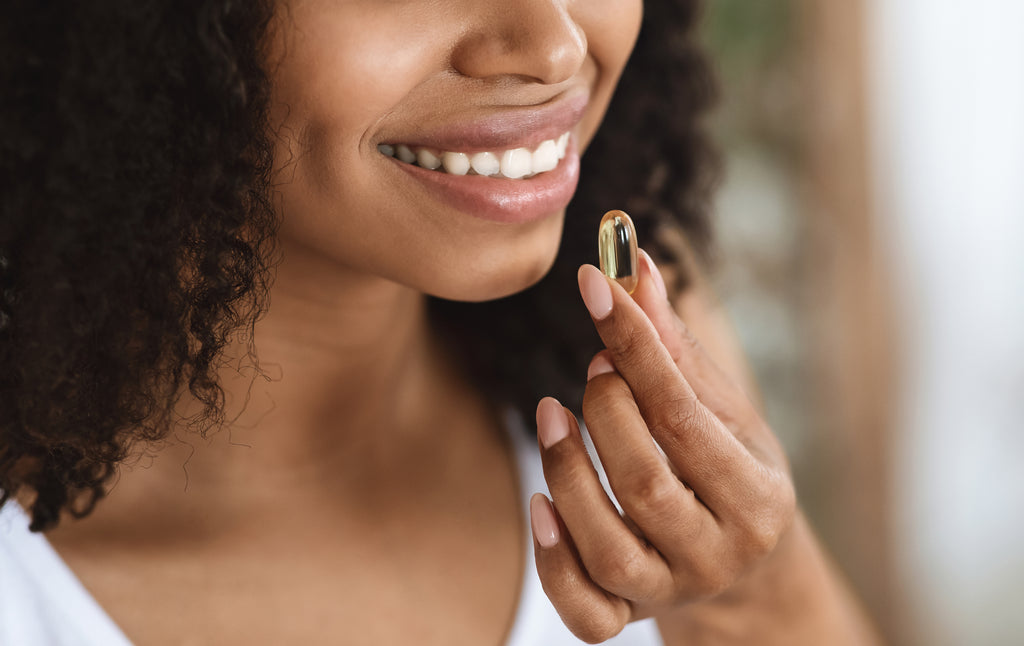
Protect Your Skin This Summer with Masquelier's French Pine Bark Extract with Original OPCs
Masquelier’s French Pine Bark Extract with Original OPCs is a treatment that helps neutralize free radicals, strengthen your vascular system, and enhance blood flow and waste removal throughout your body. Some of the benefits of taking this treatment include:
- Improved eye health and vision
- Reduced appearance of fine lines and wrinkles (smile lines, crow's feet, and more!)
- Protection of collagen and elastin against free radical damage
- Reduced appearance of unsightly veins on the surface of the skin
- Reduced age spots and uneven pigmentation
- Improved skin suppleness
- Minimized heavy leg and varicose veins
Professor Jack Masquelier was a renowned French Phyto-scientist who discovered that the Oligomeric Proanthocyanidin Complexes (OPC) extracted from pine bark and grape seed could help to fight the decline of blood vessels and capillaries and free radical accumulation. Dr. Masquelier was the first person to identify and isolate OPCs from pine bark and grape seed and then created a natural blend called Original OPC.
Masquelier's OPCs shield collagen fibers from free radical damage, helping to maintain healthy collagen levels. Clinical studies have also shown that Masquelier's OPCs significantly reduce sunburn caused by exposure to UV while improving skin hydration. Dr. Masquelier’s French Pine Bark Extract with Original OPCs has been available in the French market under the name of Flavan® since the late 1980s, but it has only recently been marketed in the United States.
Don't let overexposure to the sun destroy the collagen in your skin. This summer, reap the benefits of Masquelier’s French Pine Bark Extract with Original OPCs from the pine forests of Southwest France.
This powerful, antioxidant-rich supplement will transform your aging skin and shield it from the hot summer sun. Try it today!
How To Repair Sun Damaged Skin
If you're feeling the effects of existing sun damage, there are some things you can add to your skincare regimen to help you reverse it. Aside from the steps listed above, which you should implement to reduce the risk of future skin problems; we have some more tips and treatments to help fight back against skin irritation, thinning skin, photoaging, and pigmentation caused by the sun.
Let's take a look at what you can do to reverse the signs of existing sun damage:
Soothe Sunburn With Hydrating Skincare
We know that there's nothing worse than a nasty sunburn, but whatever you do, resist the urge to scratch!
To help your burns heal quickly, avoid scratching, don't use ice packs, and definitely don't pop any blisters that might appear. Instead, you need to drink plenty of water to hydrate your skin and cool down from within. You can also cool burns with a lukewarm or cold shower, and apply a soothing aftersun cream or gel to the skin.
For sun-damaged skin, recommend using skincare lotions that contain humectants, which are ingredients that attract and retain water in the skin. Some of the best humectants include hyaluronic acid, honey, and aloe vera.
More helpful reading: Benefits of drinking water for skin
Try a Healing Sheet Mask
Taut Collagen Mask is a refreshing, cooling, and soothing treatment that contains a rich collagen essence infused with hyaluronic acid, botanical squalene, and vitamin C. If you have a sign of sun damage or a burn on your face, this mask can help reduce irritation, minimize pigmentation, and calm redness by speeding up the skin healing process.
Hydrolyzed marine collagen peptides trigger collagen synthesis in your skin, encouraging new collagen fibers to develop and heal your skin. Hyaluronic acid will infuse your skin with the moisture it desperately needs, which botanical squalene and vitamin C work together as powerful antioxidants to brighten, hydrate, and soften your skin.
The perfect treatment after a long day at the beach!
More helpful reading:
https://www.renewskinco.com/blogs/i/how-is-collagen-made
Replenish Your Skin's Collagen
Exposure to the sun's ultraviolet UV light has a damaging effect on your collagen and elastin, resulting in premature aging like wrinkles, dark spots, and sagging skin. This is why sun-worshippers will have that wrinkly leather-like skin when they get older, while those who look after their skin will retain a more youthful porcelain appearance.
One way to fight back against the premature aging caused by the sun is to give your skin a collagen boost. You can increase your collagen supplies through foods, collagen facials and treatments, topical skin care products, and collagen supplements.
More helpful reading:
https://www.renewskinco.com/blogs/i/how-to-increase-collagen
How Can a Collagen Supplement Help Sun Damaged Skin?
Since the sun causes your collagen to become brittle and dry, it makes sense that replenishing your collagen supplies can help reverse the damage and restore some youth and vitality to your complexion. The most effective way to boost your body’s collagen supplies is from within, with a properly researched hydrolyzed collagen supplement that can deliver collagen peptides to your skin cells.
A supplement like Taut Premium Collagen Drink contains 13,000 mg of hydrolyzed marine collagen peptides, a potent concentration that guarantees effective results. Our formula also contains elastin peptides, hyaluronic acid, grape seed extract, vitamin C, ceramide, and vitamin B6; a dream team of powerful skincare ingredients that have antioxidant, anti-inflammatory, and anti-aging properties.
Drinking just one bottle per day can have visible results in as little as three weeks!
Learn more:
https://www.renewskinco.com/blogs/i/liquid-collagen-drink-supplement-benefits
Repair & Protect With a Dual-Action Skincare Program
By combining both protective and repairing ingredients in one skincare regimen you can give your complexion the best chance at radiance, particularly when you are facing sun damage and the signs of photoaging on your skin.
The Taut Anti-Oxy Foxy Kit combines our Taut Premium Collagen Drink with Masquelier's French Pine Bark OPC for maximum sun protection. A 24-day supply of Taut Premium Collagen Drink will maximize your collagen supplies and infuse your skin with hyaluronic acid, elastin, and antioxidants for a firmer, fuller, and smoother complexion.
A daily dose of Masquelier's Pine Bark Extract will fight free radicals for a bright and healthy complexion, preserve your collagen fibers for a firmer and more youthful appearance, and target sun damage by reducing inflammation and improving your skin's texture and tone.
Try the program today to see visible results in just 24 days!
Did you know that you can subscribe and save on our best skincare products? Learn more:
https://www.renewskinco.com/collections/auto-ship-service
References:






